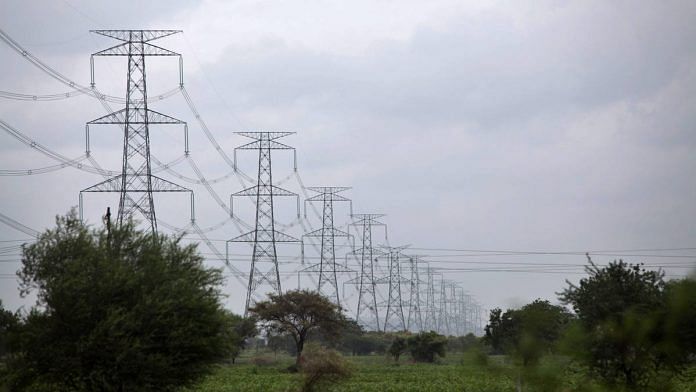India has made significant strides in its aim to provide 100 per cent electrification in the last few years. From being power deficit to emerging as the third largest producer and consumer of electricity in the world—the country has come a long way. The development of transmission infrastructure across India has responded to match increased generation capacity. However, the power distribution sector still lags. While government efforts to improve the sector’s efficiency have yielded results, private companies still tend to outperform the sector average in power distribution.
All stakeholders will benefit if the government focuses on bringing competition in the sector. This can be done by introducing new distribution models while reworking the existing ones such as distribution franchising (DF).
Discom importance, performance
Distribution is vital as it is the end link in the electricity value chain and is a nodal point for consumers. Therefore, the onus of cost recovery for the entire sector lies with power distribution companies (discoms). The distribution sector must be financially viable so that it garners enough cash to feed the rest of the value chain, fund future capital expenditure, and keep consumer tariffs affordable.
Despite several challenges, there have been promising developments in the Indian power distribution segment.
The government has taken various measures to improve the efficiency of state-owned discoms. Programmes such as the ongoing Revamped Distribution Sector Scheme (RDSS), which aims to infuse $35 billion into the sector over five years, have yielded benefits. There have been improvements in billing and collection efficiency, customer service, reliability of supply and an overall reduction in aggregate technical and commercial (AT&C) losses for state-owned discoms from 23 per cent to 17 per cent at the end of 2023.
Privately owned discoms have been ahead in most key parameters with an average AT&C loss of less than 10 per cent and even 3 per cent in certain geographies. Investments in technology, management, and infrastructure have yielded significant improvements. However, currently, private discoms cover just about 10 per cent of the population in India, indicating room for growth.
Also read:
Inducing competition through new & old models
Privatisation, however, is not a panacea. It is a means and not the end.
Enabling competition is a key objective of the Electricity Act 2003. Privatisation is necessary but may not be a sufficient condition for improving discom efficiency as seen in cases such as the DF model.
Historically, in most areas, DF models reduced losses significantly but did not necessarily meet the intended objectives and turned out to be unviable. In some cases, the model failed to be financially stable and failed to address the structural issues required at the transitional stage.
For India Power Corporation Limited (IPCL), which operated a DF for around 300,000 customers in Bihar from 2013-18 and exhibited a reasonable level of operational success, AT&C losses were reduced by 35 per cent and revenue increased by more than 300 per cent. However, due to a poorly constructed contract and weak dispute resolution mechanisms, the DF model did not achieve the desired results.
Also read:
Discoms need sustainable privatisation
Lessons from successful – and failed – privatisation cases highlight the importance of a robust regulatory framework, transparent contractual agreements, and a phased approach to implementation. Regular monitoring, stakeholder engagement, and a focus on consumer welfare remain crucial elements for sustainable privatisation in the discom sector. The sector’s evolving nature requires a nuanced approach that aligns with the unique challenges and opportunities within each state.
The Indian government continues to explore innovative models such as public-private partnerships (PPP), ensuring efficient service delivery and social impact. As a significant private player in the distribution business and based on our past learnings from a distribution franchise operation, I would suggest that, apart from promoting models like PPP and 100 per cent privatisation, the government should also take another look at the distribution franchise model.
Regulatory-based franchise is one model that holds great potential in this space. The success of this model hinges on a robust regulatory framework that ensures transparency and fair competition and protects the interests of both consumers and franchisees. In the model, regulatory bodies set performance standards, tariff structures, and monitoring compliance to create a level playing field for all stakeholders. With a well-defined regulatory framework, transparent agreements, and a focus on performance standards, this model can significantly improve efficiency, infrastructure, and consumer satisfaction.
The road to discom privatisation has several challenges— resistance from stakeholders, political interference, and disputes over tariff structures, to name a few. Financial stress on discoms and concerns about affordability for consumers has sparked debates on the social impact of privatisation. However, the government seems to be on the right path. A more focused approach to inducing competition – by introducing new models and amending those tried previously – will go a long way.
Raghav Raj Kanoria is Managing Director & Executive Director at India Power Corporation Ltd (IPCL), and a Member of National Infrastructure Advisory Council, Chairman-East & Northeast Regional Council at Indo-Canadian Business Chamber and Member of West Bengal State Council of Technical Education. Views are personal.
(Edited by Zoya Bhatti)



